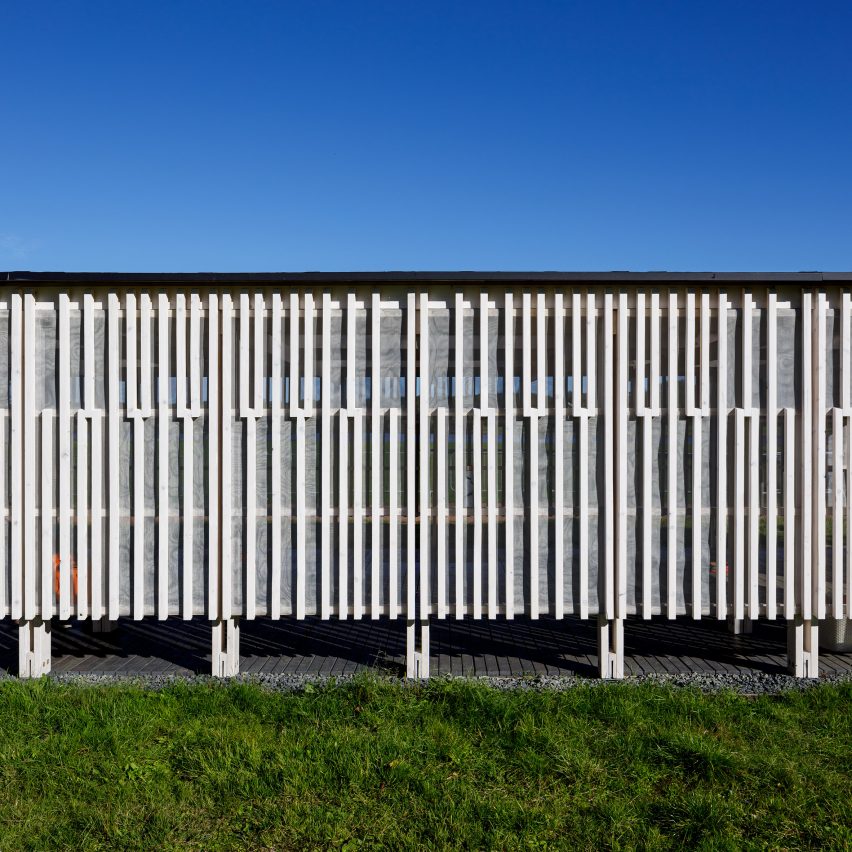
Skylights made from a patchwork of recycled phone, tablet and laptop screens create a rainbow-like lighting effect inside this pavilion at Strathclyde Country Park in Scotland, designed by O’DonnellBrown Architects with artist Kate V Robertson.
Overlooking Strathclyde Loch, the 80-square-metre Rainbow Pavilion was commissioned by North Lanarkshire Council as the first project in a new arts strategy for the park encouraging collaborations between artists, architects and the community.
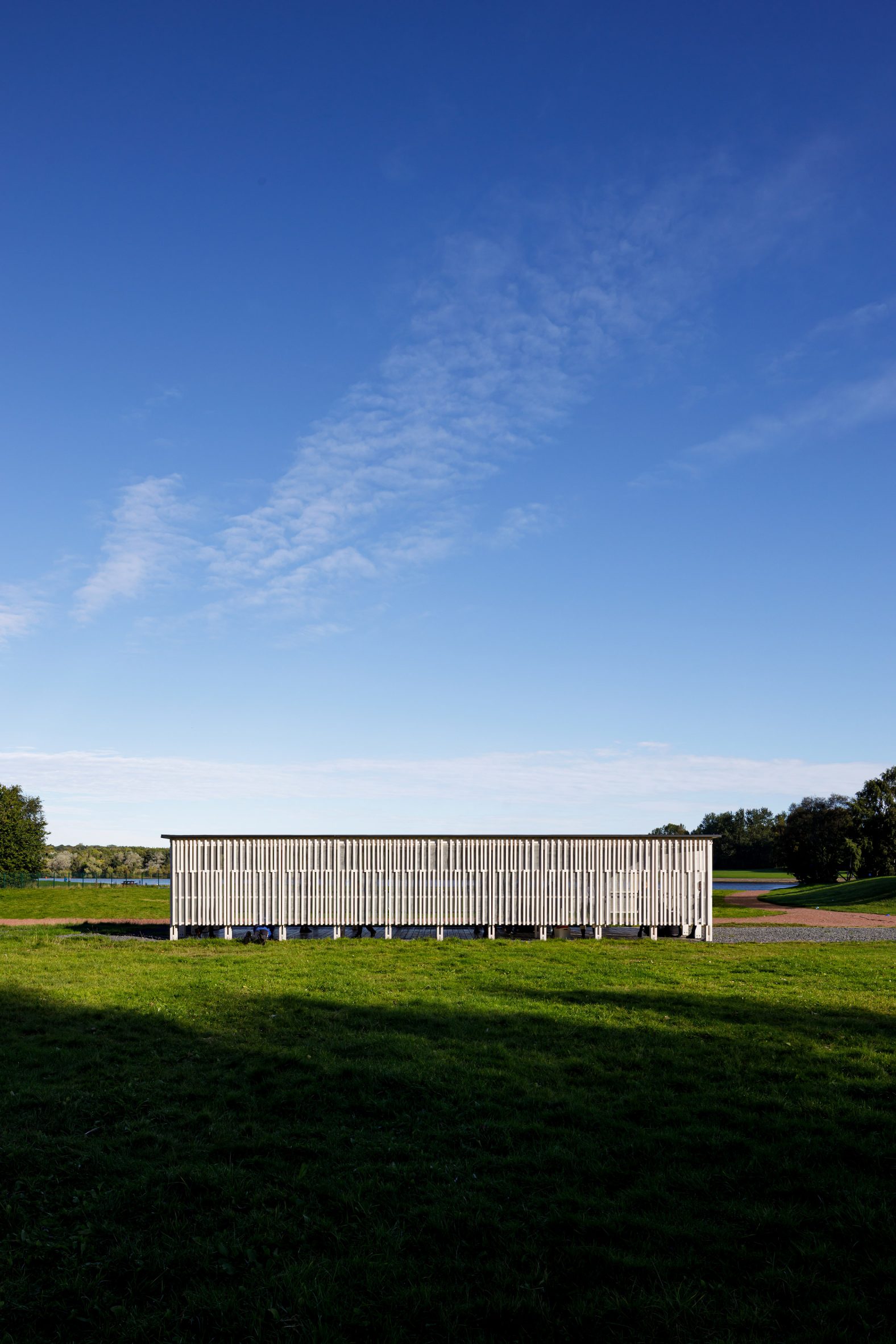
Glasgow-based O'DonnellBrown worked with local artist Kate V Robertson and children from the nearby New Monkland Primary School to design the pavilion, which will host educational activities as well as private hires and events.
Unveiled on Outdoor Classroom Day on 4 November, the pavilion is part of an ongoing project by the practice to promote outdoor learning spaces that began with the design of a prototype, the Community Classroom, during the 2020 coronavirus lockdown.
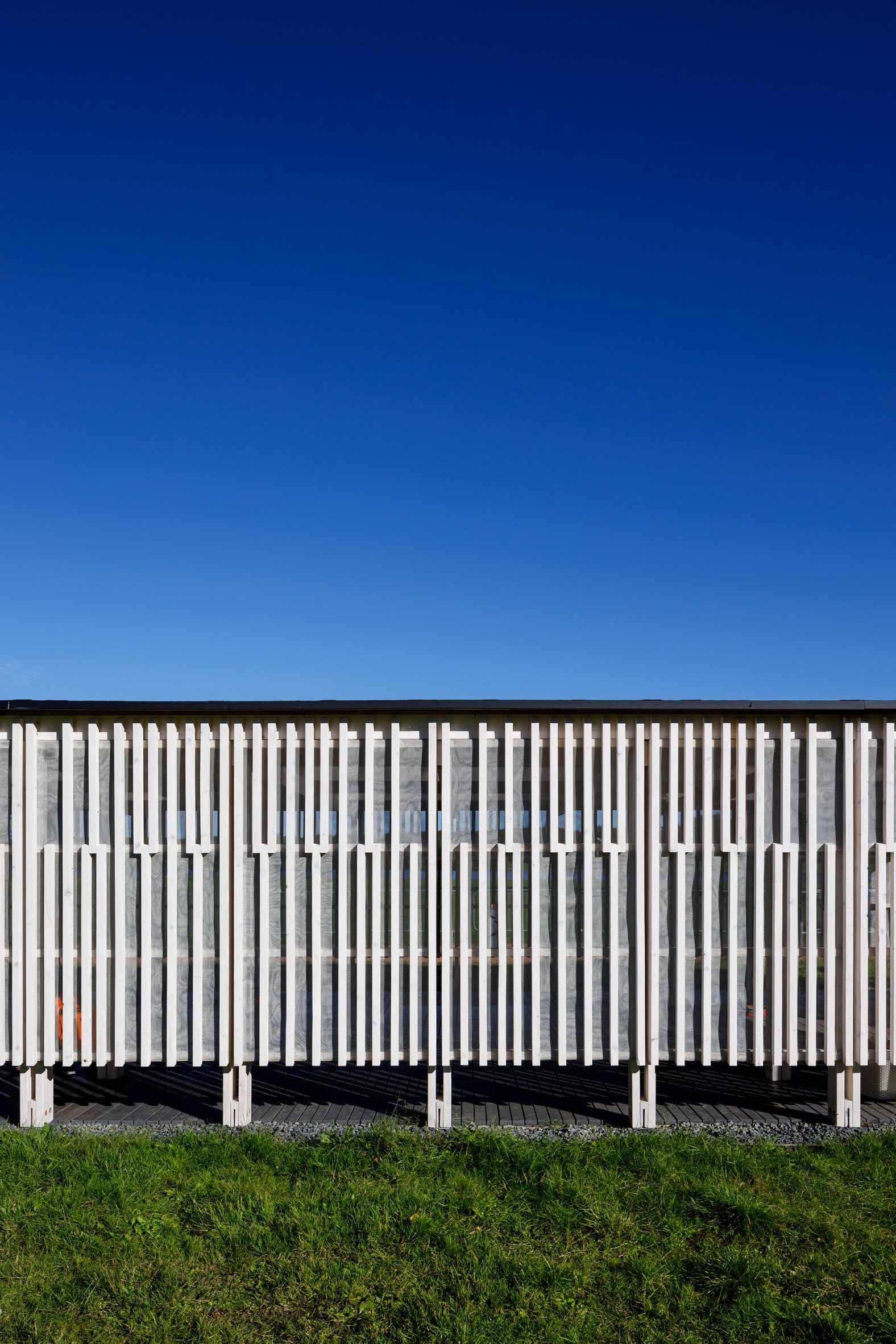
“Furthering our ideas for what a healthy and inspiring learning space can be, the shelter will be an adaptable resource to help schools deliver progressive outdoor learning experiences,” said practice director Jennifer O'Donnell.
Using the same structural principles as the Community Classroom, the shelter has been created using sections of whitewashed timber in repeating column modules that support a raised timber deck and a timber roof.
On each of the pavilion’s sides, a pattern of timber battens covers rain screens made by layering sheets of metal mesh, designed by artist Kate V Robertson to create a pattern of light that mimics the reflection of light by the nearby Strathclyde Loch.
Looking to minimise waste and promote the principles of a circular economy, films from the recycled screens of phones, tablets, computers and other devices have been integrated into these rain screens, and also form the pavilion's skylights.
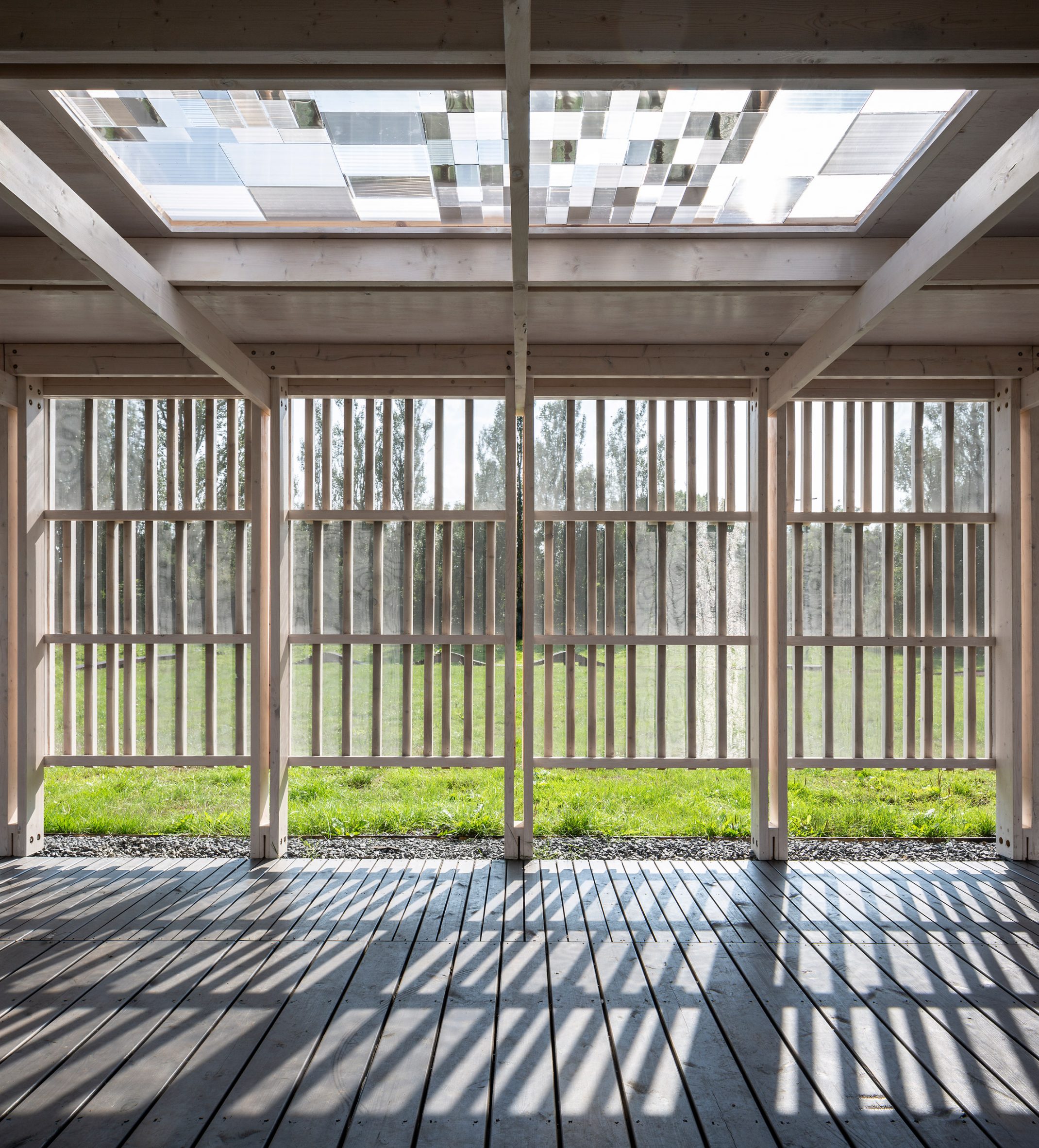
As well as creating an envelope to protect the interior from the elements, these film surfaces create a prism-like rainbow effect as light passes through them, which bounces around the interior.
"The process of integrating the artwork and the architecture was seamless," said artist Kate V Robertson, "as a result, the shelter has a unity of form, structure, and materials – and their effects."
The screens were sourced by a local campaign started by the artist to collect broken or unwanted devices, with the remaining materials recycled via Waste Electrical and Electronic Equipment (WEEE) Scotland.
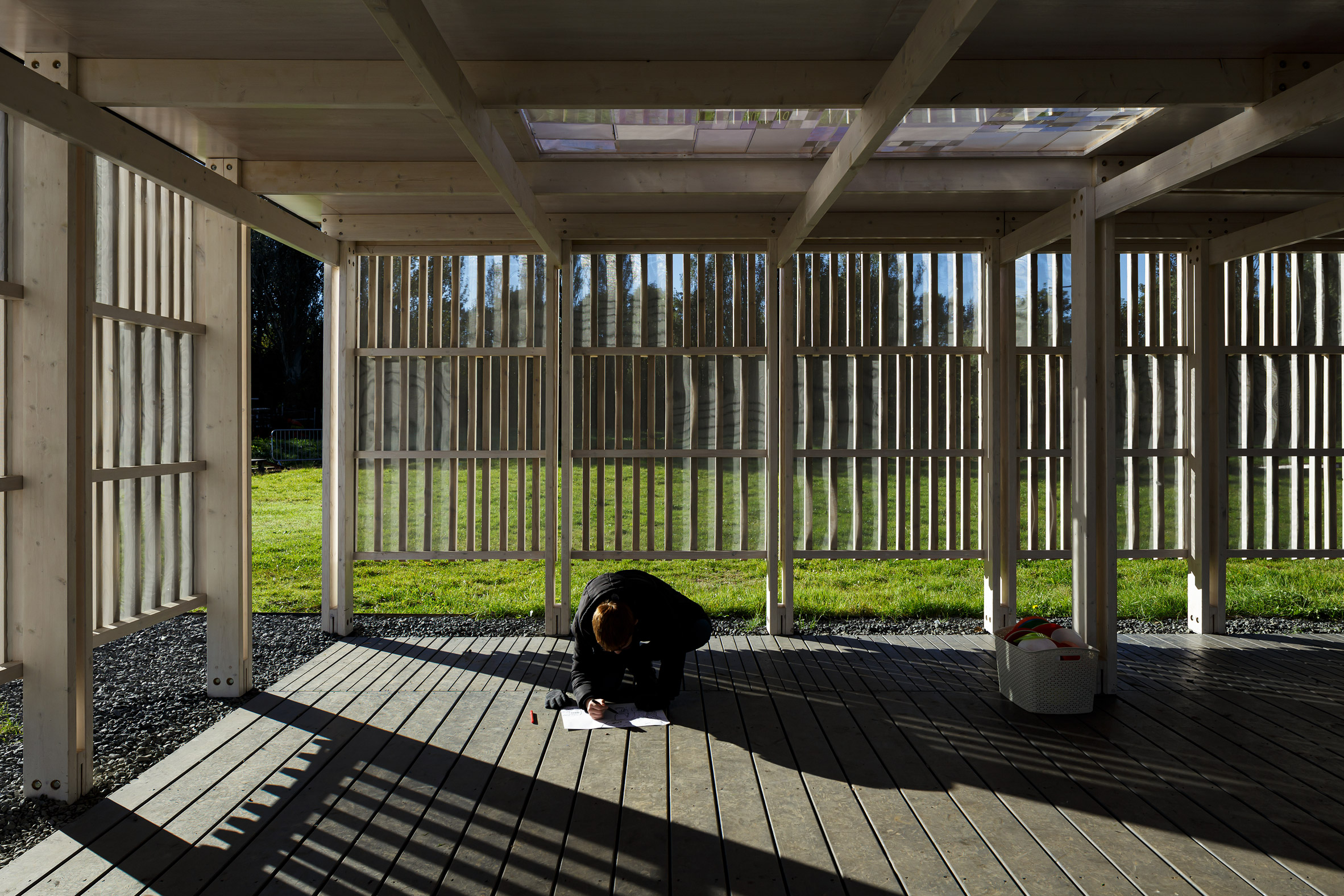
The coronavirus pandemic has accelerated an already growing interest in the provision of outdoor learning spaces, as a white paper by interior design practice Roar recently explored.
As well as O'DonnellBrown's Community Classroom project, other concepts include American practice SOM's modular, pop-up classroom design, and UK Studio Curl la Tourelle Head's tent-like classrooms that allow for social distancing.
The post O'DonnellBrown uses recycled materials for outdoor learning pavilion in Scottish park appeared first on Dezeen.
from Dezeen https://ift.tt/3l8imiA
No comments:
Post a Comment